State of Matter
Everything around us is made up of matter. Matter exists in different states - solid, liquid, and gas. These states are determined by the arrangement and movement of the particles that make up the matter.
Solid
- Particles in a solid are packed closely together in a regular pattern.
- They vibrate but do not move from their fixed positions.
- Solids have a definite shape and volume.
- Examples of solids include ice, wood, and metal.
Liquid
- Particles in a liquid are close together but not in a regular pattern.
- They can move past each other, allowing the liquid to flow and take the shape of its container.
- Liquids have a definite volume but no definite shape.
- Examples of liquids include water, oil, and juice.
Gas
- Particles in a gas are far apart and move freely in all directions.
- Gases have no definite shape or volume and expand to fill their container.
- Examples of gases include air, helium, and carbon dioxide.
Changes in States of Matter
Matter can change from one state to another through the processes of melting, freezing, evaporation, condensation, and sublimation.
Study Guide
- What are the three states of matter?
- Describe the arrangement of particles in a solid.
- Explain the movement of particles in a liquid.
- How do the particles behave in a gas?
- Give examples of each state of matter.
- What are the processes through which matter can change from one state to another?
Understanding the states of matter is important in understanding the physical properties and behavior of substances in our everyday lives.
.◂Science Worksheets and Study Guides Fourth Grade. Force, motion and energy
Study Guide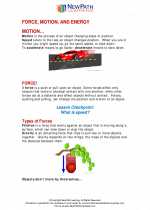 Force, motion and energy
Force, motion and energy  Activity Lesson
Activity Lesson Force, Motion & Energy
Force, Motion & Energy  Worksheet/Answer key
Worksheet/Answer key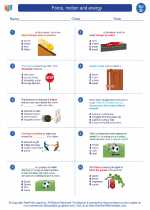 Force, motion and energy
Force, motion and energy  Worksheet/Answer key
Worksheet/Answer key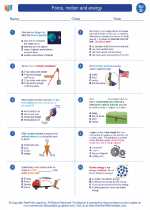 Force, motion and energy
Force, motion and energy  Worksheet/Answer key
Worksheet/Answer key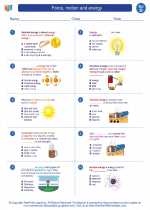 Force, motion and energy
Force, motion and energy  Worksheet/Answer key
Worksheet/Answer key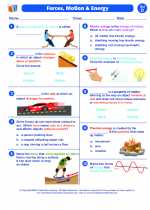 Forces, Motion end Energy
Forces, Motion end Energy  Vocabulary/Answer key
Vocabulary/Answer key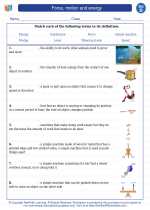 Force, motion and energy
Force, motion and energy  Vocabulary/Answer key
Vocabulary/Answer key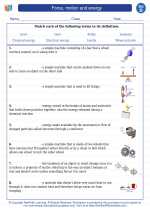 Force, motion and energy
Force, motion and energy  Vocabulary/Answer key
Vocabulary/Answer key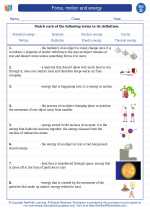 Force, motion and energy
Force, motion and energy 

 Activity Lesson
Activity Lesson
 Worksheet/Answer key
Worksheet/Answer key
 Worksheet/Answer key
Worksheet/Answer key
 Worksheet/Answer key
Worksheet/Answer key
 Worksheet/Answer key
Worksheet/Answer key
 Vocabulary/Answer key
Vocabulary/Answer key
 Vocabulary/Answer key
Vocabulary/Answer key
 Vocabulary/Answer key
Vocabulary/Answer key

The resources above cover the following skills:
PHYSICAL SCIENCE (NGSS)
Energy
Students who demonstrate understanding can:
Use evidence to construct an explanation relating the speed of an object to the energy of that object.